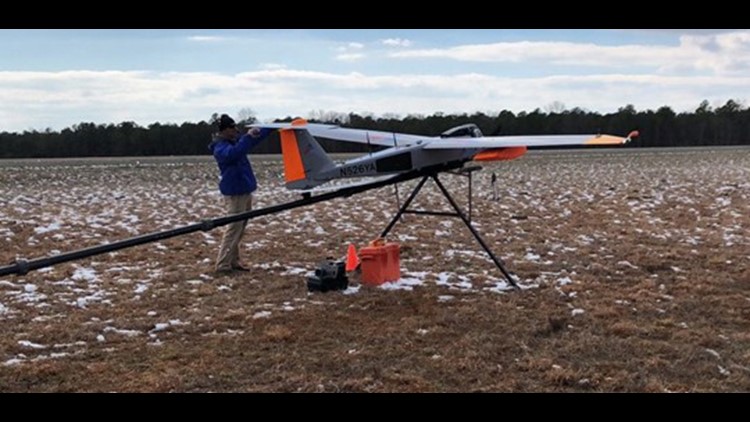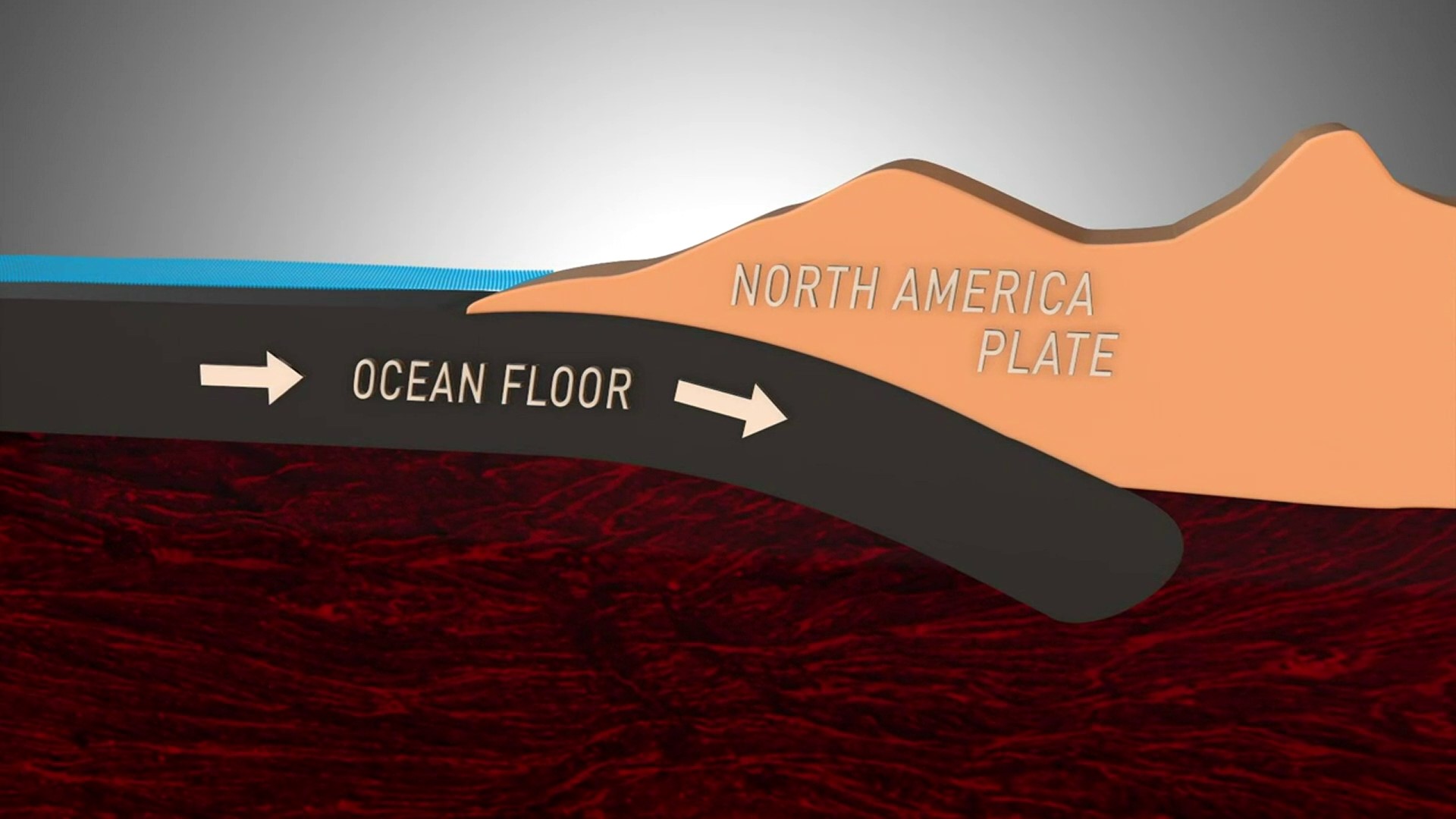CAPE MAY COUNTY, N.J. – Cell service get clobbered by a hurricane? Fly in a drone.
The rash of devastating storms that knocked out power and phone service to millions in the U.S. last year laid bare how vulnerable those technological lifelines are to extreme weather. Some companies are trying to use one of this decade's coolest developments — remote-controlled drones — as a temporary fix.
Recently, at a small municipal airport not far from the beaches of southern New Jersey, Verizon tested a 200-pound unmanned aircraft with a 17-foot wingspan, carrying a "femtocell," or small flying cell site designed to provide service to an area that has lost coverage.
"Bridges may be out, roads out, things washed away. But flying this cell site might be the very fastest way to deliver very badly needed service to first responders on the ground,” says Christopher Desmond, a principal engineer for Verizon’s network.
The test is the latest in a series of exercises Verizon has been conducting with drones since 2016. Verizon's intent is to supply a precise "cone of coverage" to the first responders who request communications help in the wake of a disaster, though anyone in that coverage area would also be able to get a signal.
Such communications can mean life or death to residents of storm-hit areas. After Hurricanes Irma and Maria struck Puerto Rico in the fall, around 90% of cell sites around the island were wiped out.
First responders are testing these unmanned remote-controlled aircraft during other disasters, using them to scan flooded buildings, oil and gas leaks and wildfires and to assist in search and rescues.
The U.S. Department of the Interior said recently it is acquiring 50 small drones to help during natural disasters, including mapping wildfires. It flew nearly 5,000 unmanned flights last year, and expects to fly 50% more this year as it responds to floods, fires and other emergencies.
Acting Federal Aviation Administration chief Dan Elwell has called the integration of drones into our airspace a “national priority” that in the aftermath of recent hurricanes “became a literal lifeline.”
The National Transportation Safety Board, as part of its investigation after a bus crash near Loxley, Ala., recently conducted its first nighttime drone operation, to scan the accident scene.
Drones are also delivering medical help in hard-to-reach areas. In Rwanda, for example, Silicon Valley-based Zipline has been flying drones to drop satchels of blood to hospitals in need, cutting delivery time from hours to minutes.
And in Arizona, Johns Hopkins researchers recently flew blood samples across more than 160 miles of desert, a three-hour flight in a small temperature-controlled unmanned aircraft.
Progress in using drones in emergency situations contrasts with the stuttering start made by commercial drone delivery — an aim of Amazon and package delivery companies such as UPS. Regulatory and safety concerns, and the public's fear that their privacy could be compromised by an overhead camera, have held these efforts back.
“From a technical perspective, we’re capable of performing all these missions,” says David Yoel, founder and CEO of American Aerospace Technologies, the Conshohocken, Pa.-based owner of the drone Verizon used in its Cape May tests.
First responders need to be educated that the drones are available for emergencies and to learn how to deploy them in a real-world calamity. Companies such as American Aerospace participate in disaster preparation drills and sign service agreements with Verizon or other partners to be on standby when a storm occurs.
As Hurricane Irma approached, for example, Verizon kept six drone vendors, including American Aerospace, on standby.
The severity of recent storms have spurred some researchers to innovation. Following a 2013 tornado that devastated Hattiesburg, Miss., a local university developed an "ambulance drone" that delivers a medical kit with smart glasses for a bystander to wear, which allows a remote physician to direct the person to use the kit.
"It may be a while before the cavalry comes in these kinds of major events," says Italo Subbarao, co-developer of HIRO (Healthcare Integrated Rescue Operations) Telemedical Drone systems at William Carey College of Osteopathic Medicine in Hattiesburg, which is testing its ambulance drones.
For all the potential benefits drones may bring when disaster hits, such unmanned aircraft also suffer from a public relations problem, with folks fretting about everything from a drone dropping from the sky to a loss of privacy when one flying overhead carries a camera.
The FAA imposes restrictions that ground other aircraft around a disaster area to reduce the risk of airborne collisions. And operators must secure approval from the agency to fly in any airspace controlled by an air traffic facility.
Tests are underway in which a drone flies further than a pilot can see, "for developing what the criteria will be for the safe operation of unmanned aircraft (in the skies) with manned aircraft," says John Walker an aerospace consultant with the Padina Group in Lancaster, Pa.
Shortly after the drone took off during Verizon’s Cape May test, a “chase plane” followed to ensure that the drone could avoid other aircraft if it flew past a designated airspace.
The gas-powered drone used during Verizon’s test can remain airborne for up to about 16 hours. Though capable of going much higher, the drone this day flew at an altitude of about 2,000 feet and was controlled by a pilot in a nearby mobile operations center. Moments after launch, people on the ground who had no service minutes before were able to make and receive phone calls. “In any emergency, communications is always the problem. We’ve seen it through Hurricane Irene, Hurricane Sandy and some other winter events," said Marty Pagliughi, the director of emergency management and communications for Cape May County. "Anything that can enhance that during or after an emergency, we’re all in favor of it.”



